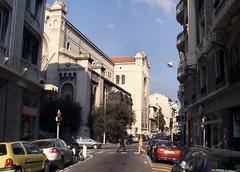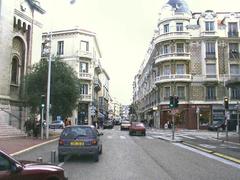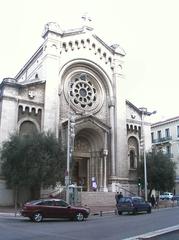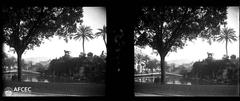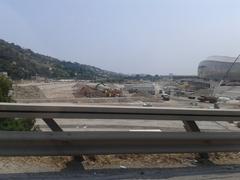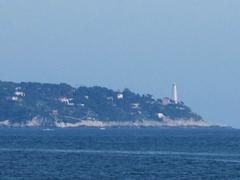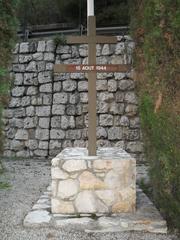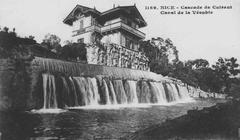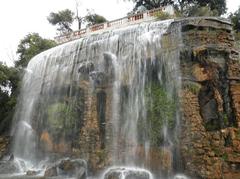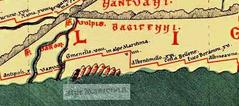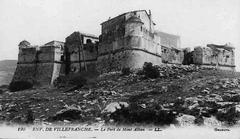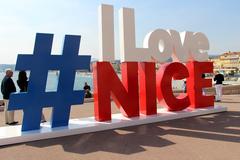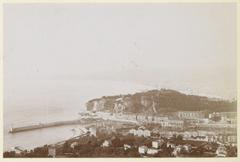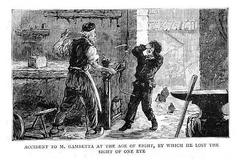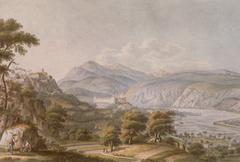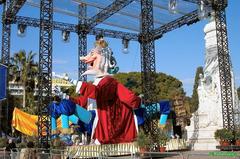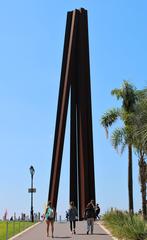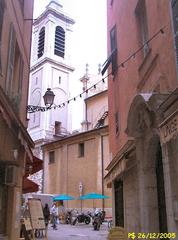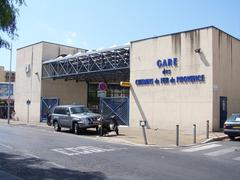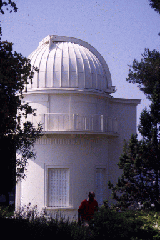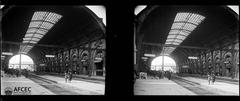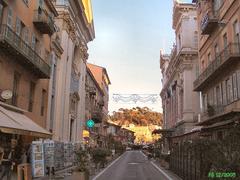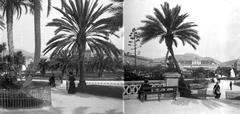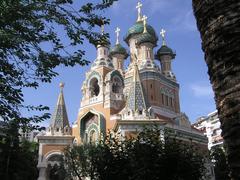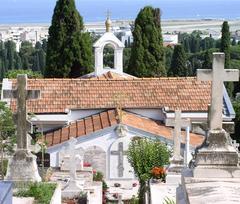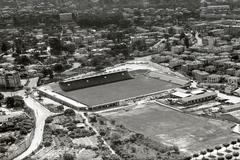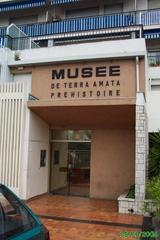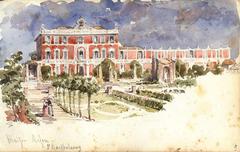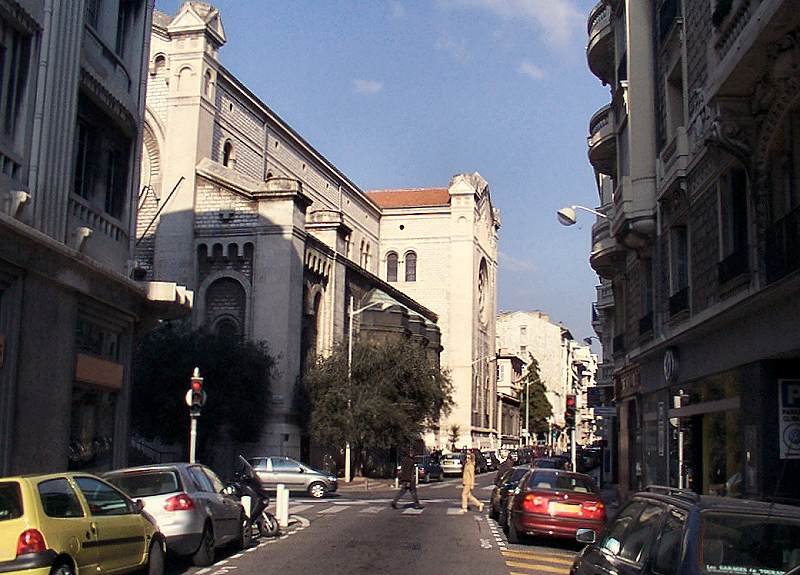
Comprehensive Guide to Visiting Église Saint-Pierre-d’Arène de Nice, Nice, France
Date: 24/07/2024
Introduction
Nestled in the vibrant heart of Nice, France, Église Saint-Pierre-d’Arène stands as a testament to the city’s rich cultural and historical tapestry. This historic church, located at 52 Rue de la Buffa, is not only a place of worship but also a significant cultural landmark that has evolved over centuries. Established initially as a chapel in 1762 by Don Massot, the church has witnessed multiple phases of expansion, modernization, and cultural contributions, making it a must-visit destination for history enthusiasts and tourists alike. The church’s journey from a modest chapel by the beach to its current status as a prominent religious institution reflects the broader historical and cultural shifts that have shaped Nice over the centuries (Wikipedia, Religiana).
This guide aims to provide comprehensive information for potential visitors, covering the church’s rich history, architectural significance, visitor information including ticket prices and opening hours, and travel tips. Additionally, we will explore nearby attractions and provide insights into the church’s role in the local community. Whether you are a history buff, an architecture aficionado, or simply looking to explore the cultural heritage of Nice, Église Saint-Pierre-d’Arène offers a unique and enriching experience.
Table of Contents
- Introduction
- History of Église Saint-Pierre-d’Arène
- Visitor Information
- Nearby Attractions
- Travel Tips
- Architectural Features
- Community Engagement
- FAQ
- Conclusion
History of Église Saint-Pierre-d’Arène
Origins and Early Development
The origins of the Église Saint-Pierre-d’Arène can be traced back to 1762 when the priest Don Massot established a chapel dedicated to Saint Peter. This initial structure was situated near the beach, in the area now known as the Promenade des Anglais. The name “arena” in the local Niçois dialect refers to the sandy beach, hence the original name “Chiesa San Pietro d’arena” (Wikipedia).
The Restauration Sarde Period
In 1814, during the Restauration Sarde period following 22 years of French occupation (1792-1814), the chapel was consecrated as a full-fledged church by Monseigneur Jean-Baptiste Colonna d’Istria, the bishop of the Diocese of Nice. This period marked the church’s transition from a simple chapel to an important religious institution. The church initially served the monarchist families who had been exiled to Italy during the French Revolution, thus retaining a distinct cultural identity (Wikipedia).
Expansion and Modernization
The most significant phase of expansion began on January 18, 1914. This project aimed to transform the modest chapel into a larger, more imposing structure. Despite the interruptions caused by World War I, the construction continued, and the church was finally inaugurated on January 23, 1938. However, it remained incomplete, a testament to the challenges faced during its construction (Wikipedia).
The Role of Father Gil Florini
Since 2001, the church has been under the stewardship of Father Gil Florini, a notable figure in the local community. Known for his modern approach and unique blessings, such as those for mobile phones and animals, Father Florini has been a dynamic force in the church’s recent history. He is also recognized for his entrepreneurial spirit, having created the “pastis de Nice” and authored a book titled “Ce qu’un curé ne peut pas dire” in 2017 (Nice-Matin).
Cultural and Artistic Contributions
The Église Saint-Pierre-d’Arène has also played a significant role in the cultural life of Nice. Since 2011, it has hosted the “Messe des Artistes” on Ash Wednesday, an event that brings together artists from across the Côte d’Azur. This initiative was spearheaded by Reverend Father Yves-Marie Lequin of the Dominican Order, who has served as the chaplain for artists since the event’s inception (Wikipedia).
Recent Developments
In recent years, the church has continued to evolve. A notable change occurred in 2024 when Father Gil Florini was reassigned to the Saint-Charles-de-Foucauld territory, which includes several parishes in the eastern part of Nice. This move was part of a broader reorganization within the Diocese of Nice, aimed at addressing the needs of different communities (Nice-Matin).
Visitor Information
Ticket Prices
Find out about the latest ticket prices for visiting Église Saint-Pierre-d’Arène. [Provide the most recent ticket price information and any discounts available].
Opening Hours
Plan your visit by checking the current opening hours of the church. [Provide the latest opening hours].
Accessibility
Learn more about the accessibility features of Église Saint-Pierre-d’Arène to ensure a comfortable visit for everyone. [Provide details on accessibility].
Nearby Attractions
While visiting Église Saint-Pierre-d’Arène, you might also want to explore nearby attractions such as the Promenade des Anglais, the Matisse Museum, and the Castle Hill of Nice. Each of these sites offers unique insights into the rich cultural tapestry of Nice.
Travel Tips
Best Time to Visit
The best time to visit Nice and Église Saint-Pierre-d’Arène is during the spring or early autumn when the weather is pleasant, and the tourist crowds are thinner.
Getting There
The church is easily accessible by public transport, including buses and trams. If you’re driving, there are several parking facilities nearby.
Dress Code
As a place of worship, it’s respectful to dress modestly when visiting the church.
Architectural Features
The architectural style of the Église Saint-Pierre-d’Arène reflects its long history and the various phases of its construction. The church’s design incorporates elements from different periods, creating a unique blend of styles. Despite its incomplete status, the church remains a significant landmark in Nice, attracting both worshippers and tourists alike (Wikipedia).
Community Engagement
The church is not just a place of worship but also a hub for community activities. It offers a range of services, including regular masses, community events, and support for the needy. The church’s commitment to social outreach is evident in its various programs aimed at helping the less fortunate, a mission that has been strongly supported by its clergy over the years (Nice Catholique).
FAQ
What are the visiting hours for Église Saint-Pierre-d’Arène?
[Provide the latest visiting hours].
How much are the tickets for Église Saint-Pierre-d’Arène?
[Provide the latest ticket prices].
Is Église Saint-Pierre-d’Arène accessible?
[Provide details on accessibility].
Conclusion
Église Saint-Pierre-d’Arène de Nice is more than just a historical monument; it is a living testament to the rich cultural and religious heritage of Nice. From its humble beginnings as a chapel by the beach to its current status as a significant cultural and religious center, the church has continually adapted to the changing needs of its congregation and the broader community. Visitors are invited to explore its intricate architectural features, participate in its vibrant cultural activities, and reflect on its historical significance. The church’s ongoing preservation efforts ensure that future generations will continue to appreciate its beauty and cultural importance.
Whether you are visiting for a moment of quiet reflection, to admire its architectural splendor, or to participate in one of its many cultural events, Église Saint-Pierre-d’Arène promises a deeply enriching experience. By following the guidelines and information provided in this guide, you can make the most of your visit and gain a deeper understanding of this remarkable historical site in the heart of Nice (Nice Catholique, Nice-Matin).
References
- Wikipedia. Église Saint-Pierre-d’Arène de Nice. Retrieved from https://fr.wikipedia.org/wiki/Église_Saint-Pierre-d’Arène_de_Nice
- Religiana. Église Saint-Pierre-d’Arène de Nice. Retrieved from https://religiana.com/eglise-saint-pierre-darene-nice
- Nice Catholique. Paroisse Saint-Pierre-d’Arene. Retrieved from https://nice.catholique.fr/paroisse-saint-pierre-darene/
- Nice-Matin. Le Père Florini, curé emblématique de l’église Saint-Pierre-d’Arène à Nice, est nommé dans la cité de l’Ariane. Retrieved from https://www.nicematin.com/religion/le-pere-florini-cure-emblematique-de-l-eglise-saint-pierre-d-arene-a-nice-est-nomme-dans-la-cite-de-l-ariane-848156
